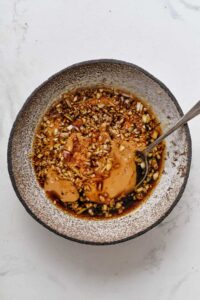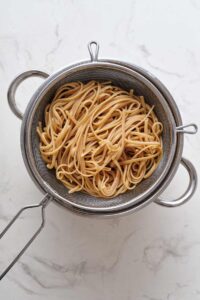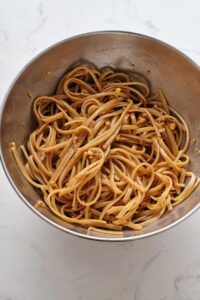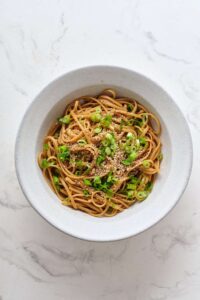This Asian-inspired recipe checks all the boxes: quick, easy, and absolutely delicious.
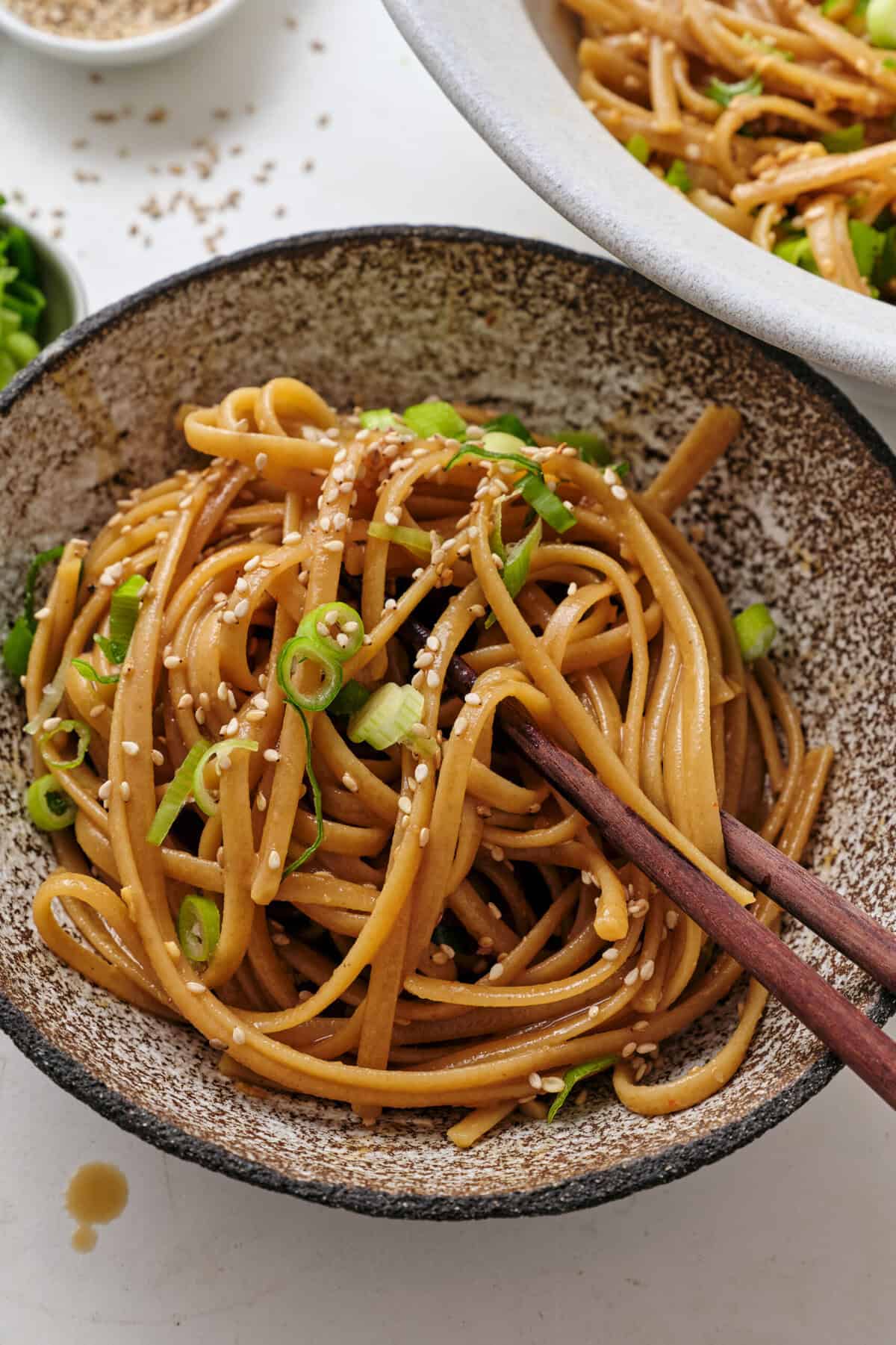
My weekdays are pretty busy. On the days when I actually have time to cook a quick meal, I run into another problem: I don’t have time to grocery shop for special ingredients! That’s when I turn to this sesame noodles recipe. They’re super quick to prepare, and I almost always have all the ingredients for this recipe in my pantry.
Sesame noodles are popular all over the Western world today, but they are thought to have originated centuries ago in China where they’re often served cold. Other Asian countries—including Korea, Japan, and Taiwan—have developed their own versions, and they show up on menus in Asian-fusion eateries around the world, often adapted to local preferences for proteins, veggies or spices.
My favorite pastas to use as a base for this recipe are spaghetti and linguine, and I usually go for the slightly healthier option of whole wheat. For the silky sesame sauce, you’ll need Asian-cuisine staples like low-sodium soy sauce, rice vinegar, and toasted sesame oil—as well as American pantry must-haves, like smooth peanut butter, honey, sriracha, garlic, and ginger. If you don’t already have these ingredients at home, it’s worth stocking them, as they are key components in so many other great Asian-inspired recipes.
To finish off this sesame noodles recipe, you’ll need sliced green onion and toasted sesame seeds for garnish. The whole thing comes together quickly and easily in a creamy, nutty flavor profile that perks up any mealtime!
Are Sesame Noodles Healthy?
Overall, this recipe is quite balanced in terms of healthiness, as long as you’re comfortable enjoying certain ingredients in moderation. This recipe allows for healthier alternatives for certain ingredients, like whole-wheat pasta and low-sodium soy sauce. Natural ingredients like garlic, ginger, green onion, sesame seeds and honey make for great healthy additions to nearly any diet. However, sesame oil and peanut butter contain fairly high levels of fat that may be of concern for some individuals.
To make this recipe gluten-free, simply swap the whole wheat pasta for rice noodles and the soy sauce for tamari. I recommend using a noodle with a mid-size thickness. If the noodle you choose is too thin, like vermicelli or angel hair, it may not be the best vessel for the thick, silky sesame sauce.
What Is Rice Vinegar?
Rice vinegar is a staple in Asian cuisine. It’s made from rice wine in China, Japan, Korea and Vietnam, and it’s used in a wide range of dressings, sauces, and seasonings. It has the same acidic sourness as other vinegars, but is slightly milder and sweeter. There is a large variety of rice vinegars out there depending on the traditional cuisines of different countries—but this recipe calls for a standard version of rice vinegar found at most grocery stores in the Western world.
If you can’t find rice vinegar at your grocery store, you could substitute another vinegar with mild acidity, such as apple cider vinegar, white wine vinegar, or sherry vinegar. If you want to give this recipe an extra punch of fresh flavor, you can use lime juice to add acidity to the sauce. Just make sure to taste as you go so that the lime flavor doesn’t overpower other ingredients.

FAQs & Tips
You can easily store leftover noodles in an airtight container in the fridge for up to 3 days. These noodles are delicious cold, so you don’t necessarily have to heat up leftovers. Perfect for a refreshing nosh on a hot summer day! If you’d rather have warm leftovers, simply reheat them in a pan on the stovetop with a dash of sesame or olive oil to prevent sticking. Or heat them in the microwave with a bit of water or broth to keep them moist, stopping to stir every 30 seconds until they’re heated through.
Yes! You can prepare the sauce and noodles ahead and store them separately in the fridge until you’re ready to combine and serve the dish. Just make sure to leave the green onion garnish for a last-minute add-on, as it’ll become soggy if stored with the sauce.
This recipe for sesame noodles contains some optional sriracha sauce, which lends some spiciness to the dish. You can add more if you’re a fan of heat, just remember to taste as you go so as not to overdo it.
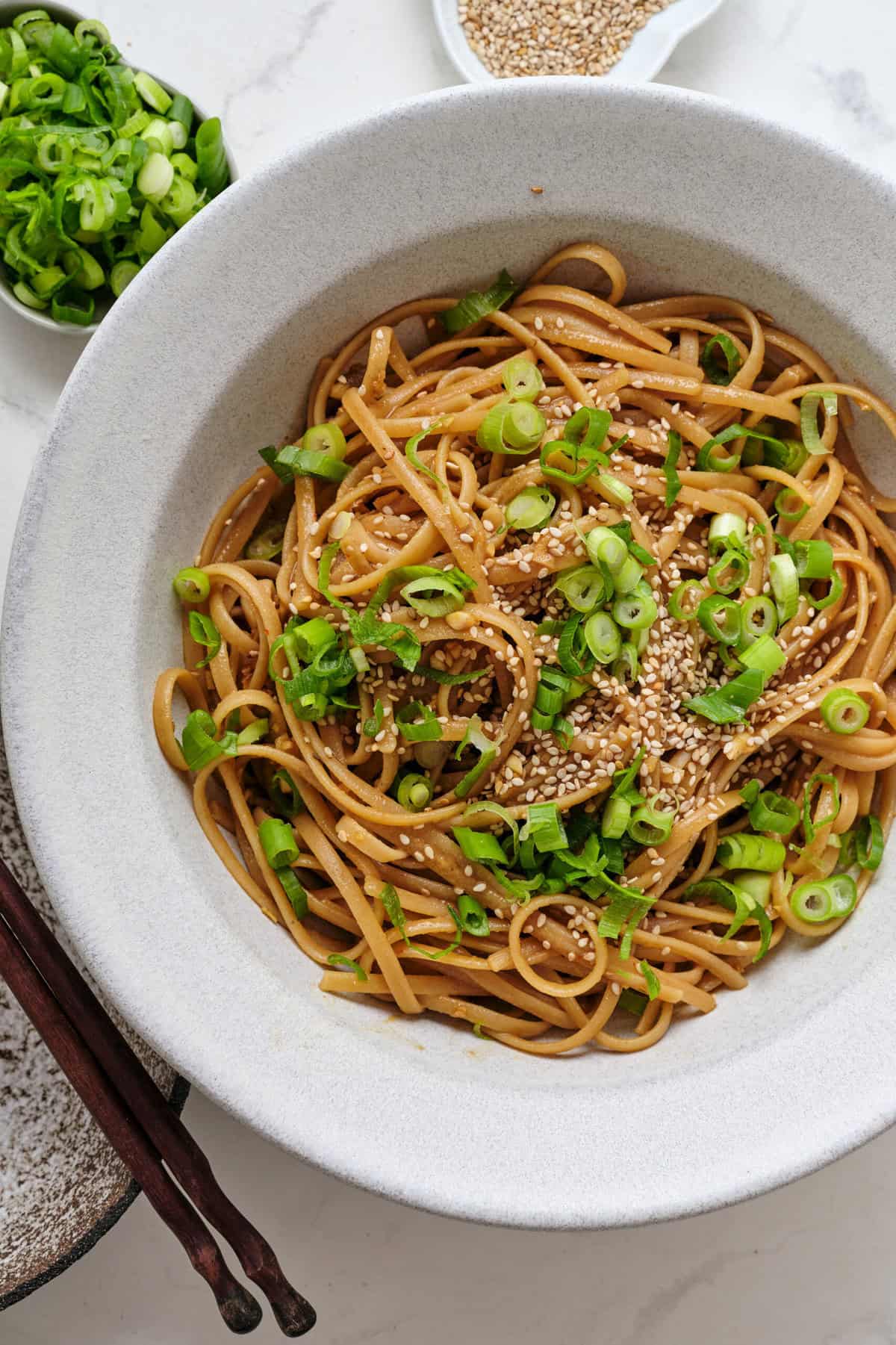
Serving Suggestions
This recipe is great for busy days because it comes together quickly with ingredients you likely already have on hand. So, if you’re in a rush, these sesame noodles are incredible on their own. But if you have a little extra time, take your meal up a notch with some yummy pairings.
If you’re looking to add some green to the table, broccoli is the perfect complement to these noodles, whether you prefer it steamed, sautéed, or roasted. Want to amp up the protein? Try this Broccoli Tofu Stir-Fry, which uses many of the same ingredients you need for the noodles.
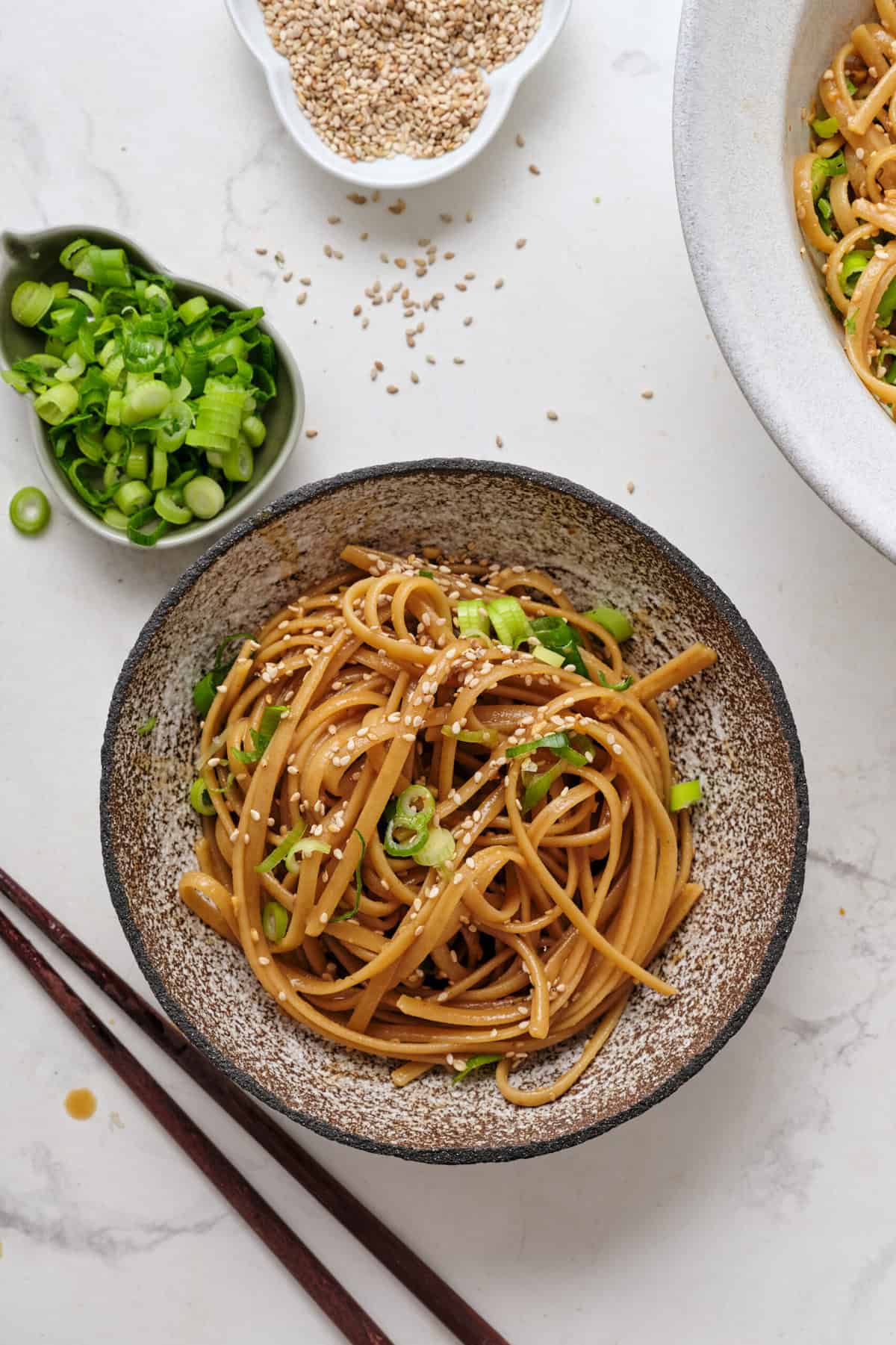
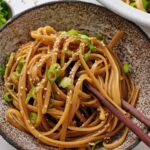
Sesame Noodles
Ingredients
- 8 ounces whole wheat spaghetti or linguine
- 2 1/2 tablespoons low-sodium soy sauce
- 4 teaspoons rice vinegar
- 1 tablespoon toasted sesame oil
- 1 1/2 teaspoons smooth peanut butter
- 2 teaspoons honey plus more to taste
- 1 teaspoon sriracha optional
- 2 cloves garlic minced
- 1 teaspoon fresh ginger minced
- 3 green onions sliced
- 1 tablespoon toasted sesame seeds
Instructions
-
Cook the noodles according to the package instructions until al dente.

-
In a bowl, whisk together the soy sauce, rice vinegar, toasted sesame oil, peanut butter, honey, sriracha (if using), minced garlic, and minced ginger until smooth. Add more honey if needed to balance the sweetness.

-
After the noodles cook, drain them and rinse them under cold water to stop the cooking process.

-
In a large bowl, toss the cooked noodles with the sauce until they are evenly coated.

-
Top the noodles with sliced green onions and toasted sesame seeds.

Nutrition
The post Sesame Noodles appeared first on Food Faith Fitness.


